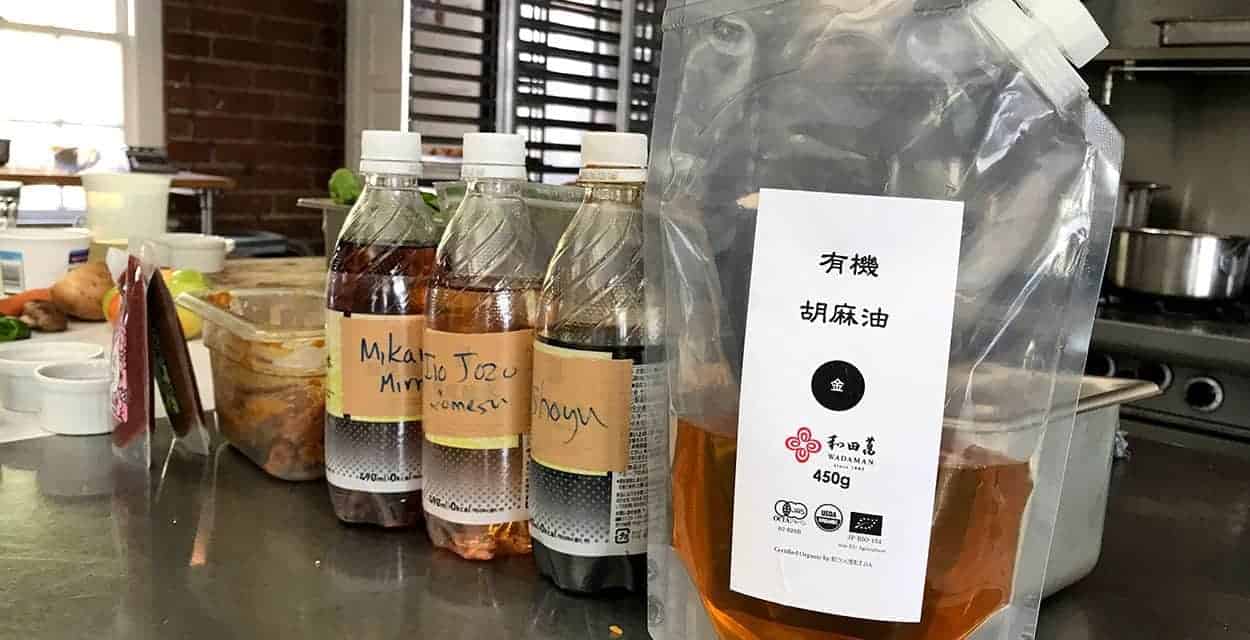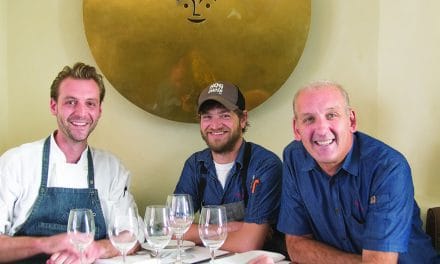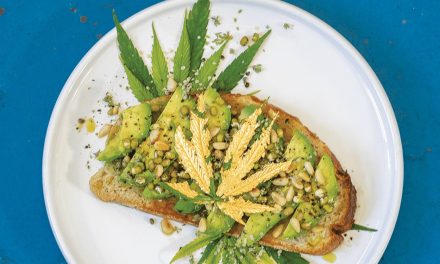
The knife that Nancy Singleton Hachisu carries with her when she travels out of Japan is a long tool with a flat blade hewn from light, razor-thin metal. It’s simple — runs about $30 — but her recommendation is specific.
“It’s not fancy, but if you’re going to cook Japanese food, you need this kind of blade,” she tells a group of students sitting around the metal tables in a tight commercial kitchen at Los Poblanos Organic Farm and Historic Inn.
Hachisu’s first two cookbooks — Japanese Farm Food and Preserving the Japanese Way — helped introduce the Western world to recipes from rural Japan. Her forthcoming cookbook, Japan: The Cookbook, will feature 390 recipes reminiscent of Japanese kitchens in the 1970s and ‘80s.

These are recipes you won’t find on the internet, and certainly not in English, Hachisu tells us as she begins preparing the spicy napa cabbage pickles recipe — demonstrating the straight-down chopping motion required for the flat-bladed knife as she cuts carrots into long, thin batonnets. Then, she massage the cucumbers with flaky sea salt. “Soft hand, strong spirit,” she advises.
Just like the knife, Hachisu has specific, sometimes hard-to-find recommendations for ingredients like the soy sauce, sesame oil and mirin she’s mixing together to dress the pickle dish. She knows the farmers and suppliers who produce the bright-smelling golden sesame oil and the rich, complex soy sauce. If your neighbor doesn’t grow his own soybeans and ferment them into sauce like Hachisu’s, you might travel to specific stores in California or Oregon to find these ingredients state-side, or order them online.
But if you buy the good stuff, go all in, Hachisu advises. Don’t seek out fine miso only to pair it with low-quality mirin. “If you’re going to use mid-grade, use mid-grade across the board,” she says. We taste the two types of salt she’s brought and the exquisite smoky dried skipjack tuna, or katsuobushi. We smell the golden sesame oil and soy sauce, and let chewy pieces of kombu, or dried seaweed, dissolve into complexity on our tongues. And I think: it really would be a shame to muddle these rich flavors with the flat tones of mediocre ingredients.


There’s hardly been a time in Nancy Singleton Hachisu’s life when she hasn’t been thinking about food. She learned to cook as a child in California, and later married a Japanese farmer who kept the kitchen of their decades-old farmhouse supplied with fresh organic eggs and abundant produce. Hachisu has honed an intuitive approach to weaving the season’s bounty into her dishes even if it strays a little from tradition.
The day before this cooking demo, Hachisu wandered the Los Poblanos grounds with the class, picking ripe peppers and eggplant and tailoring her cooking plans to the day’s bounty. A handful of small apples became a lively amuse, cut into thin slices and paired with salty brown rice miso. Bright radishes found a last-minute home atop tomatoes dressed simply with oil, vinegar and soy sauce.
At a long table set under a canopied deck, we sat down for lunch as the day turned from threatening rain to embracing the sun. We peppered Hachisu with questions as we spooned up mouthfuls of light chicken broth from the udon soup, enjoyed the seven-spice chicken skewers and savored the grains of rice cooked with ginger juice.
Los Poblanos, and New Mexico, draw Hachisu back every few years. She’ll be back soon, she anticipates, on tour with a new cookbook to her name.
Edible celebrates New Mexico's food culture, season by season. We believe that knowing where our food comes from is a powerful thing. With our high-quality, aesthetically pleasing and informative publication, we inspire readers to support and celebrate the growers, producers, chefs, beverage and food artisans, and other food professionals in our community.

















